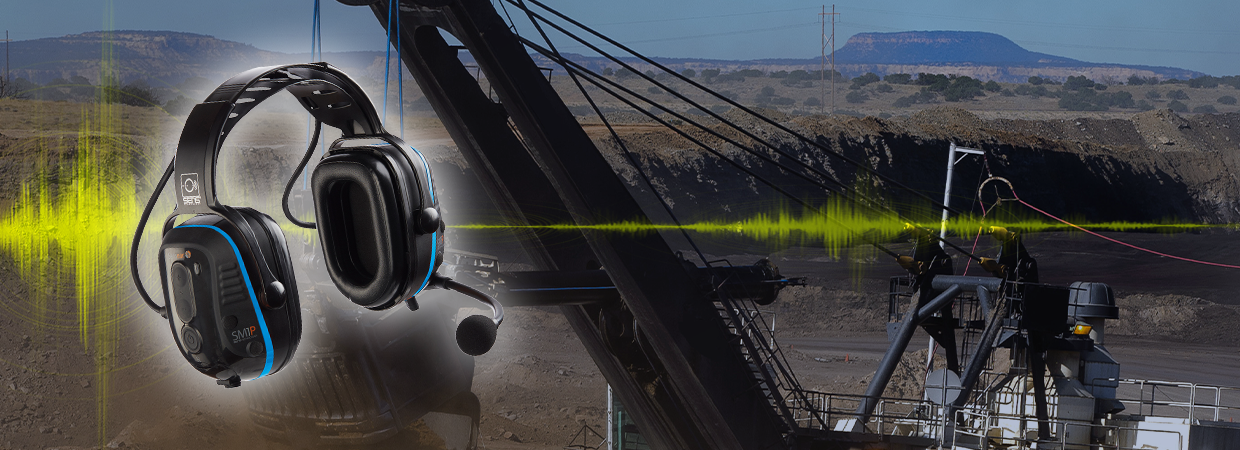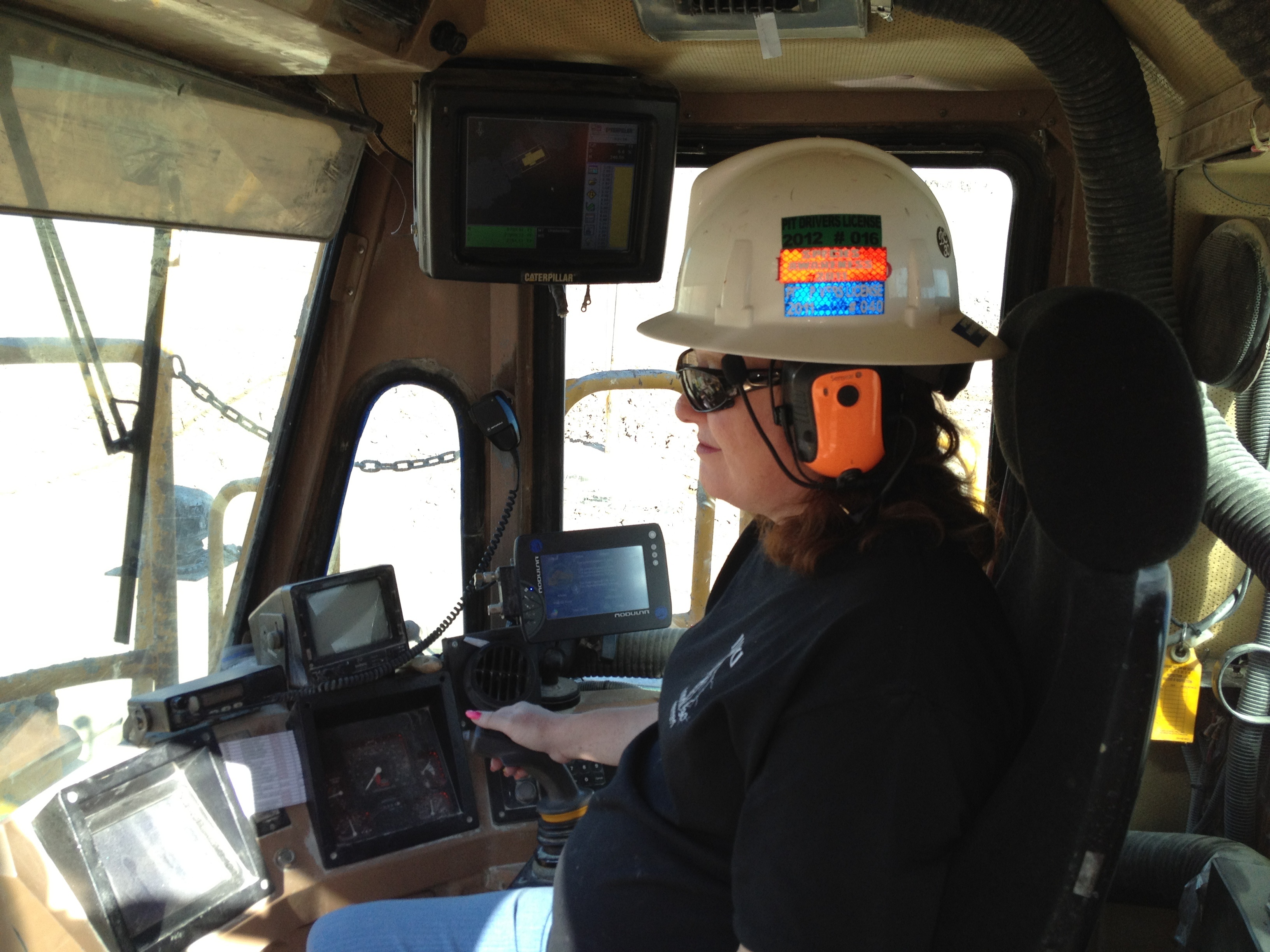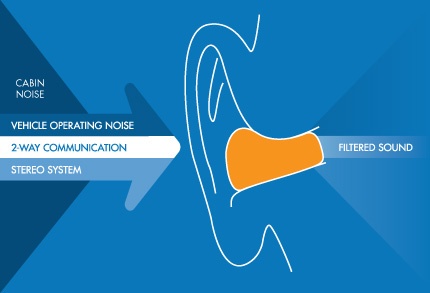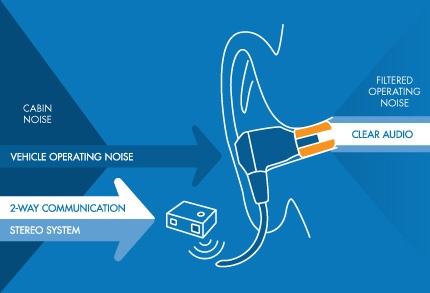- Home
- Blog
- High-Noise Communication
- How to Improve Communications in Heavy Equipment Environments?

How to Improve Communications in Heavy Equipment Environments?
 It’s no secret that operators of heavy vehicles and machinery face unique challenges.
It’s no secret that operators of heavy vehicles and machinery face unique challenges.
These may include:
- Working in extreme weather conditions
- Exposure to fumes and chemicals
- Loud environmental noise
A panel at the Heavy Vehicle Safety Summit that took place in April of this year noted that a combination of training and technology is key to addressing the human aspect of these challenges. In a recent blog post, we talk about how to get your workers to adhere to your safety guidelines. But what about technology?
From a noise perspective, typically heavy equipment vehicles are built to operate within a 75-82dB(A) range depending on payload, road, and the vehicle itself. As a point of reference:
- A typical family vehicle will run between 40 and 60dB(A),
- Fire engines will have low to mid 80dB(A) noise levels,
- Haul Trucks for Mining operations are around 90dB(A) with combined two-way and satellite radio entertainment competing for a driver’s attention.
- Military vehicles are even higher with an M1A1 Abrams tank running around 108dB(A) or more, even 93dB(A) at idle. (I know first-hand as a former M1A1 Tanker!)
These high noise levels make communications difficult—or impossible—for operators.
In these cases, ear-muffs or plugs are used to protect hearing, and headsets are used for communications. Two-way radios are generally used to provide communications between operators inside the vehicles and operations at the base. How can a worker stay protected and still communicate while operating a heavy vehicle?
On top of this, entertainment is critical to the safe and productive operation of heavy vehicles.
Long shifts coupled with repetitious job functions result in vehicle operator fatigue being a common problem, so operators use stereos or other audio entertainment devices to help combat and manage this.
The Problem with the Solution
 The problem with this scenario is that in order to hear the two-way radio, stereos, and other entertainment, operators will boost the volume of radio and communications equipment beyond safe levels. In fact, in order for operators to hear the person on the other end of the line speaking, or the music playing on the radio, the volume needs to be turned up significantly louder than any background noise—including the noise of the vehicle.
The problem with this scenario is that in order to hear the two-way radio, stereos, and other entertainment, operators will boost the volume of radio and communications equipment beyond safe levels. In fact, in order for operators to hear the person on the other end of the line speaking, or the music playing on the radio, the volume needs to be turned up significantly louder than any background noise—including the noise of the vehicle.
The technical term for what’s happening here is “auditory masking”. Auditory masking “occurs when the perception of one sound is affected by the presence of another sound.”
Essentially, when an operator is in the cab, the 75dB(A) cab noise interferes with standard audio coming from two-way radios and stereo systems, which operate at 10dB(A) and higher.
To hear those devices and communications, operators may do one of two things:
- Take off any hearing protection they’re using (plugs or muffs), eliminating their safety effectiveness, or
- Turn up the volume on the two-way radio and stereo systems.
Either way, your operators are now exposing themselves to potentially harmful noise levels.
When you couple the vehicle noise with the additional noise of the two-way radio and entertainment, the dB levels can rise past the safe levels dictated by OSHA. As the heavy vehicles operate in the 75-80dB(A) noise range, to adequately hear the two-way radio and entertainment noise is potentially increased 10-20dB louder than the background noise, resulting in in-cab sound levels from 85 to 95dB.
 The ideal solution would allow the operator to hear the entertainment and two-way radio communications in heavy vehicles, operate in the high noise environment of the vehicle, all the while maintaining safe noise exposure to the operator.
The ideal solution would allow the operator to hear the entertainment and two-way radio communications in heavy vehicles, operate in the high noise environment of the vehicle, all the while maintaining safe noise exposure to the operator.
The only way to achieve this is by wirelessly routing the entertainment and two-way radio audio directly through a headset to the operator. This means the entertainment and two-way radio are played at a volume that is safe for the operator, within the headset, without having to compete with the noise in the cabin, reducing the operator’s harmful noise exposure.
How Does this Help My Heavy Equipment Operations?
First, the risk of hearing loss is significantly reduced as drivers are always protected. Since they can perform their job effectively with the headsets on, there is less temptation to remove them.
Operators of heavy equipment can perform their jobs safely and with less fatigue.
And secondly, communication is enhanced significantly, resulting in fewer cases of lost or inaccurate communication which can lead to truck backups and potentially dangerous consequences.
Are you interested in learning more about how you can reduce the risk of noise-related injuries while improving the communication experience for your operators in heavy vehicles?
Contact us today at Sensear for more information.






